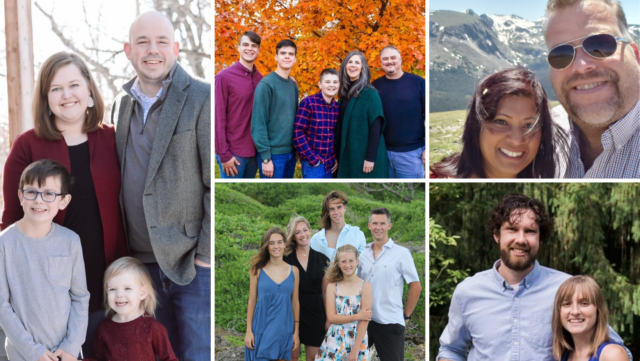It was a Friday evening and I was standing at the door of a local Rabbi’s house, and I was definitely feeling intimidated. I had never been to a Shabbat dinner before and I didn’t know what to bring. My family had stopped at the local grocery store for flowers, but now I felt insecure. I didn’t know the customs!
Then, the door opened and we were warmly welcomed and introduced to the Rabbi’s family and friends. The meal began with a prayer and we spent the next couple hours slowly eating and drinking, describing our different practices and faiths, finding commonalities and telling stories.
I won’t forget the moment where the Rabbi was teased about his “forgetfulness” to turn off the TV for Sabbath ultimately so he could watch football and not officially break any Jewish rules! We could not stop laughing and ultimately I left the night truly inspired to incorporate the Sabbath meal into my own family’s practice and to consider what this would look like for my church community.
In my first article on Sabbath, I spoke of the richness of this ancient practice and the essentials to carving out the time and space for rest.
“As the scriptures state clearly this commandment to “observe” the Sabbath day is tied to the experience of a people newly released from bondage. Slaves cannot take a day off; free people can.” (Practicing Our Faith, page 79)
The Sabbath practice is not just for the individual but for the people of God, to mutually remind each other of the grace and provision of the Lord. It was, and continues to be today, a sweet time of encouragement and remembrance of our freedom.
The Sabbath practice is not just for the individual but for the people of God, mutually reminding each other of the grace and provision of the Lord.
Danielle Pathak Tweet
The ancient Sabbath tradition started with a meal that was intended to be celebratory and festive. Guests were invited and stories were told. Parents gave prayers of blessing over their children and sang songs together. Friends felt free to enjoy each other and work was put aside.
We are currently living in a culture where people are lonely and isolated, starved for positivity and encouragement, dealing with a never ending news cycle of politics and tragedies. Children are rushed off to endless school activities and sports. Ministry work can be full of urgency and discouragement. Time with friends can often be neglected. Who has time to linger over a meal anymore, much less a meal with thoughtful intentionality? To have a Sabbath meal takes time and mental and physical preparation, maybe even a little creativity and a lot of grace!
Recently some Southern friends invited us to a shrimp boil for a Sabbath meal. They intentionally invited neighbors that don’t have a relationship with Jesus and friends that did. The mood was relaxed; the food simple. It left me with a feeling of being refreshed after a difficult week of hard pastoral scenarios, cynicism, and exhaustion. It reminded me of the beauty of deep friendship and good food and how I appreciate this in my life. I needed this space to slow down and have deeper conversations, to ask another person what they were grateful for, to appreciate simplicity.
A Sabbath meal can be as uncomplicated as takeout from your favorite restaurant or a dessert your kids make. It can also be the slow preparation of good, nourishing food. It’s ultimately about the unhurriedness of the space we set aside and the people we include.
Sabbath equalizes humans because we all need rest; a Sabbath meal is something everyone can participate in because we all eat. Sabbath rest doesn’t care about your paycheck, status, or your importance in this world. It is an older married couple inviting a single person to their table or roommates creating their own family unit over their meal.
God delights when children are made space for with their own seat and teenagers get to share their views on life. The meal is made special when a husband and a wife notice each other and ask thoughtful questions about what God is doing. It is a beautiful picture when lonely neighbors and coworkers and spiritual communities thank God together for the way he has provided.
Sabbath is an invitation for the people of God to choose to lay all their differences aside for the sake of the deeper work that happens in the heart. Gratitude, rest, and true community create rich soil for our lives and leads us to the mission God has called us to. The Sabbath meal is a gift for all who choose to participate!
Additional Resources:
- Didn’t get a chance to read part 1? Check it out here.
About the Author

Danielle Pathak became a Vineyard church planter in her 20’s and is currently the Spiritual Formation pastor for the Mile High Vineyard churches in Denver, Colorado. She loves pastoring leaders by creating frameworks of a personal Rule of Life with an emphasis on the daily/weekly rhythms. Sabbath has become one of her favorite spiritual practices because it involves her husband and 2 teenage daughters, homemade pasta, and good wine.
You're invited!
The views expressed on this site or in this media are those of the speaker(s), author(s), or contributor(s), and do not necessarily represent the views of Vineyard USA or any of its Regions, Ministries or Initiatives. For more information, see the
Vineyard USA disclaimer here.





